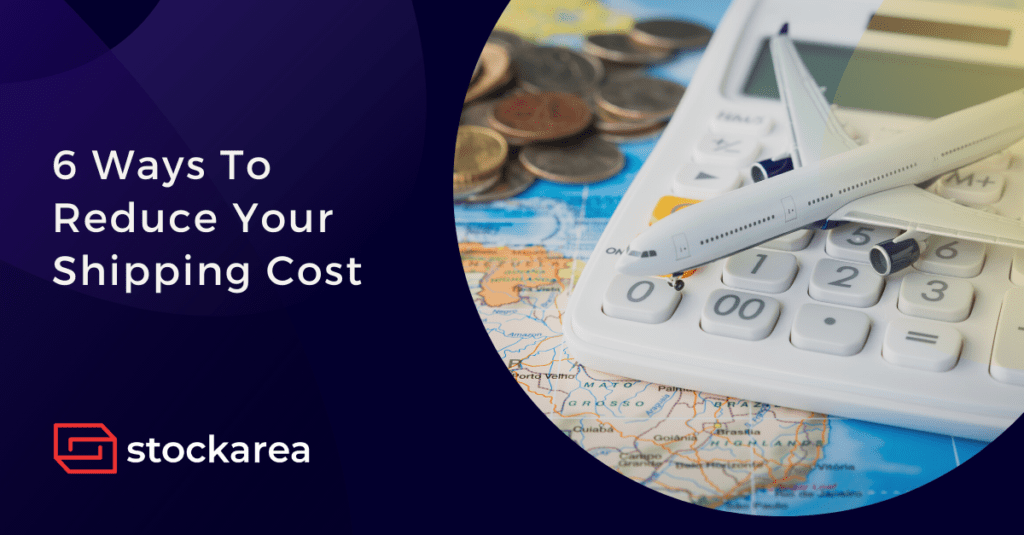Whether you run a small business or simply sell online on an ecommerce site, keeping your shipping expenses low boosts the growth of your business. Shipping costs are inherent expenses when selling physical products. High shipping costs directly affect your client satisfaction levels and your business’s profit margins. Examining all of the costs associated with order delivery can provide the competitive advantage that your business requires. Following are the most effective tips to reduce shipping costs for your business.
1. Optimize Shipping Routes
To optimize delivery and reduce shipping costs, businesses should use a route planner to map the different delivery addresses and drop-off places for the customers. A route planner integrated and enables businesses to strategically generate delivery orders with customers’ shipping addresses from online purchases.
Businesses must understand their shipping zones and optimize their shipping routes. Path optimization is the process of determining the most efficient and cost-effective route for delivery drivers to deliver an item from the source to its final destination. This may not always imply taking the fastest route. It is more concerned with decreasing overall travel time when multiple visits are made, taking into account a variety of variables such as delivery time windows, vehicle load capacity, driver schedule, hub location and traffic congestion.
2. Reuse Shipping Materials
Reusing packaging materials can be an economical solution to save shipping expenses. If a firm receives returned orders or items via the mail, it can cut down shipping costs by reusing packaging materials such as bubble wrap, shreds, etc. Repurpose the boxes and packing materials you obtain for self-owned packages. Remove any previous shipping labels and cover them with your own generated labels, this will expedite the delivery and prevent unnecessary delays. Recycling and reusing not only saves on transportation costs but also shipping material costs.
3. Choose Appropriate Packaging
Packaging is just as critical as the product it contains. Customers gain a wealth of information about your business and brand through packaging. When it comes to shipping your goods economically, selecting the appropriate packaging material is critical. It facilitates material handling, resulting in fewer manpower and a significant reduction in shipping costs. The appropriate packing material should meet shipping safety, product appearance, and consumer convenience requirements. That is why corrugated boxes and bubble wrap are the most often used packing materials, as they are robust, light, inexpensive, and simple to cut and fold.
Nowadays, as material science advances, many sellers begin to utilize particular plastics since they are waterproof, seal well, save package costs, eco-friendly, and reusable. Look for lightweight protective materials like air pillows and bubble wrap to cut your shipping expenses; the less the item weighs, the less it will cost to send.
4. Carrier Optimization
Shippers should have multiple carrier options, a distribution strategy, and optimized shipping network. Optimization of the carrier is vital in order to lower shipping costs, effectively coordinate and locate capacity, while also offering reliable shipping services for their clients. To ensure that you have enough shipping capacity, the first step is to diversify your carrier base. Even if a business obtains a favourable rate from a particular carrier, the rate is worthless if the carrier is unable to accept the freight due to capacity constraints. Businesses should concentrate their efforts on at least two to three carriers to get competitive rates without leaving a dependency on a single carrier.
5. Utilize Fulfillment Centre
It is advantageous for businesses to partner with a fulfillment centre to optimize their shipping expenses. Since it manages high order volumes, a fulfillment centre can offer much lower shipping prices with the major carriers – both domestic and international. Fulfillment centres can help you save money on shipping by storing your product in various locations across the country. This enables orders to be shipped from the nearest warehouse, considerably reducing shipping costs. You should analyze the total operational costs for your business, including a worst-case scenario, to plan appropriately and make decisions that can lower our shipping costs, maximize earnings, and shorten delivery times.
6. Monitor Your Orders
When scaling a business, it’s critical to automate and optimize the process of order monitoring; otherwise, businesses will eventually become overwhelmed by the volume of orders. Order monitoring and data analysis assist in the maintenance of order data, which leads to ease of management, and this, in turn, saves shipping costs over time. There are various tools and software programmes available in the market that can help you manage your shipping orders more effectively.
Shipping software streamlines the process of managing and tracking product shipments. These systems interact with online marketplaces, assist in carrier selection, provide a variety of shipping alternatives, and facilitate the purchase and printing of shipping labels. The software automatically computes shipping costs depending on the weight and dimensions of the item, the shipping zone, the carrier, and any other considerations such as the best rate or the quickest delivery time.
Related posts
- 8 Proven Ways to Reduce Last-Mile Delivery Cost
- 7 Simple Ways To Reduce Ecommerce Costs
- 10 Proven Tips To Grow Online Business
- 7 Proven Ways To Boost Flipkart Sales
- What Is A Shipping Label?
- 6 Key Benefits Of Printing Shipping Labels
- 8 Tips To Grow A Successful Dropshipping Business
- 7 Pro Tips To Increase Amazon Sales
- 10 Practical Tips To Reduce Warehouse Costs
- 10 Proven Methods To Reduce Delivery Time
- What Is Dropshipping?
- Complete Guide On Amazon Seller Central
- Top 10 Ecommerce Challenges For Your Business
